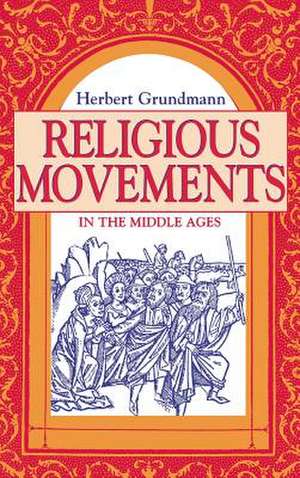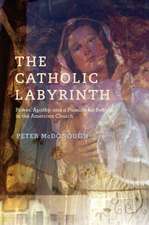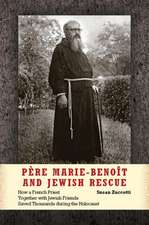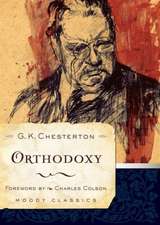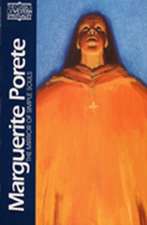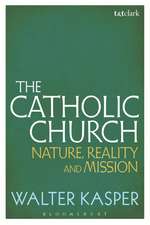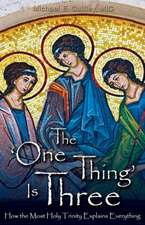Religious Movements in the Middle Ages
Autor Herbert Grundmann, Steven Rowanen Limba Engleză Hardback – 21 apr 1996
Medievalists, historians, and women's studies specialists will welcome this translation of Herbert Grundmann's classic study of religious movements in the Middle Ages because it provides a much-needed history of medieval religious life--one that lies between the extremes of doctrinal classification and materialistic analysis--and because it represents the first major effort to underline the importance of women in the development of the language and practice of religion in the Middle Ages.
Religious Movements in the Middle Ages describes a lay religious movement of the eleventh and twelfth centuries that emphasized the centrality of lifestyle rather than doctrine. The religious groups that developed and solidified out of this movement were considered heterodox by some standards, orthodox by others. However, despite initial condemnation, these groups, among them any women's groups, were given permissive rules to suit their peculiarities. Grundmann explicates the doctrines that lay behind these religious movements and captures the material contexts that fostered them. Most importantly, he is able to recapture the dynamism of the groups themselves and to identify the historically contingent events that carried them along their various paths. Perhaps the greatest synthetic daring of Grundmann's study is his emphasis on the common point of departure shared by the religious groups that were ultimately to become located on either side of orthodoxy as defined by the pope. Prior to Grundmann's study, scholars had only discussed either high medieval heresy or new orders within the Church, but never, as Grundmann does here, the common inspiration that lay behind both. Thus, this enduring study has become the foundation for the historical study of medieval religious life, and scholars agree that it remains as challenging and exciting s it was when originally published in 1935.
Religious Movements in the Middle Ages describes a lay religious movement of the eleventh and twelfth centuries that emphasized the centrality of lifestyle rather than doctrine. The religious groups that developed and solidified out of this movement were considered heterodox by some standards, orthodox by others. However, despite initial condemnation, these groups, among them any women's groups, were given permissive rules to suit their peculiarities. Grundmann explicates the doctrines that lay behind these religious movements and captures the material contexts that fostered them. Most importantly, he is able to recapture the dynamism of the groups themselves and to identify the historically contingent events that carried them along their various paths. Perhaps the greatest synthetic daring of Grundmann's study is his emphasis on the common point of departure shared by the religious groups that were ultimately to become located on either side of orthodoxy as defined by the pope. Prior to Grundmann's study, scholars had only discussed either high medieval heresy or new orders within the Church, but never, as Grundmann does here, the common inspiration that lay behind both. Thus, this enduring study has become the foundation for the historical study of medieval religious life, and scholars agree that it remains as challenging and exciting s it was when originally published in 1935.
| Toate formatele și edițiile | Preț | Express |
|---|---|---|
| Paperback (1) | 327.12 lei 6-8 săpt. | |
| MR – University of Notre Dame Press – 30 ian 1995 | 327.12 lei 6-8 săpt. | |
| Hardback (1) | 703.97 lei 6-8 săpt. | |
| MR – University of Notre Dame Press – 21 apr 1996 | 703.97 lei 6-8 săpt. |
Preț: 703.97 lei
Preț vechi: 964.35 lei
-27% Nou
Puncte Express: 1056
Preț estimativ în valută:
134.71€ • 138.97$ • 112.41£
134.71€ • 138.97$ • 112.41£
Carte tipărită la comandă
Livrare economică 26 martie-09 aprilie
Preluare comenzi: 021 569.72.76
Specificații
ISBN-13: 9780268016494
ISBN-10: 0268016496
Pagini: 476
Dimensiuni: 152 x 229 x 30 mm
Greutate: 0.87 kg
Ediția:1
Editura: MR – University of Notre Dame Press
ISBN-10: 0268016496
Pagini: 476
Dimensiuni: 152 x 229 x 30 mm
Greutate: 0.87 kg
Ediția:1
Editura: MR – University of Notre Dame Press
Recenzii
"This translation makes available to the English-speaking world one of the greatest works of German historical scholarship from the twentieth century and one of the greatest works of medieval history ever written. Sixty years after its original publication, Religious Movements in the Middle Ages remains not only learned and powerful, but innovative--even radical--as well." --Caroline Walker Bynum, Columbia University
"With the publication of Religious Movements in the Middle Ages sixty years ago, Herbert Grundmann set the conceptual framework for the historical study of several significant topics-including the origins of medieval heresy, the pastoral care of women, the rise of vernacular literature, and the origins of the friars. For two generations every scholar working on those topics has been influenced directly or indirectly by Grundmann's masterful work." --Joseph H. Lynch, Ohio State University
Notă biografică
The late Herbert Grundmann was President of the Monumenta Germaniae Historica in Munich, Germany.
Steven Rowan is Professor of History at the University of Missouri, St. Louis.
Steven Rowan is Professor of History at the University of Missouri, St. Louis.
Textul de pe ultima copertă
Religious Movements in the Middle Ages describes a lay religious movement of the eleventh and twelfth centuries that emphasized the centrality of lifestyle rather than doctrine. The religious groups that developed and solidified out of this movement were considered heterodox by some standards, orthodox by others. However, despite initial condemnation, these groups, among them any women's groups, were given permissive rules to suit their peculiarities. Grundmann explicates the doctrines that lay behind these religious movements and captures the material contexts that fostered them. Most importantly, he is able to recapture the dynamism of the groups themselves and to identify the historically contingent events that carried them along their various paths. Perhaps the greatest synthetic daring of Grundmann's study is his emphasis on the common point of departure shared by the religious groups that were ultimately to become located on either side of orthodoxy as defined by the pope. Prior to Grundmann's study, scholars had only discussed either high medieval heresy or new orders within the Church, but never, as Grundmann does here, the common inspiration that lay behind both.
"This translation makes available to the English-speaking world one of the greatest works of German historical scholarship from the twentieth century and one of the greatest works of medieval history ever written. Sixty years after its original publication, Religious Movements in the Middle Ages remains not only learned and powerful, but innovative--even radical--as well." --Caroline Walker Bynum, Columbia University
The late Herbert Grundmann was President of the Monumenta Germaniae Historica in Munich, Germany.
"This translation makes available to the English-speaking world one of the greatest works of German historical scholarship from the twentieth century and one of the greatest works of medieval history ever written. Sixty years after its original publication, Religious Movements in the Middle Ages remains not only learned and powerful, but innovative--even radical--as well." --Caroline Walker Bynum, Columbia University
The late Herbert Grundmann was President of the Monumenta Germaniae Historica in Munich, Germany.
